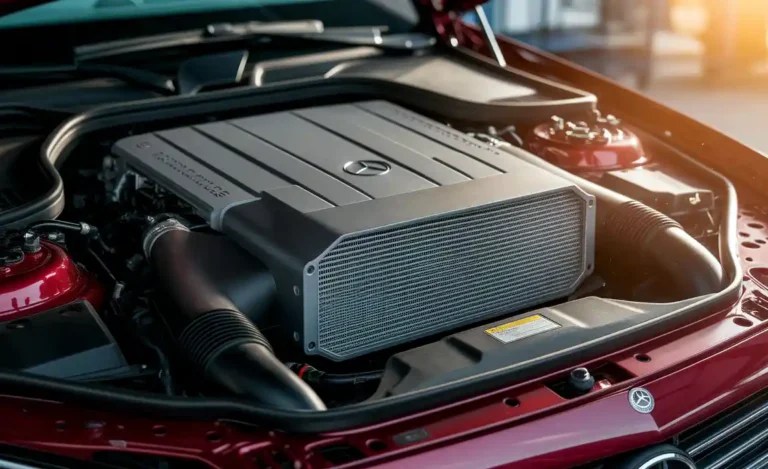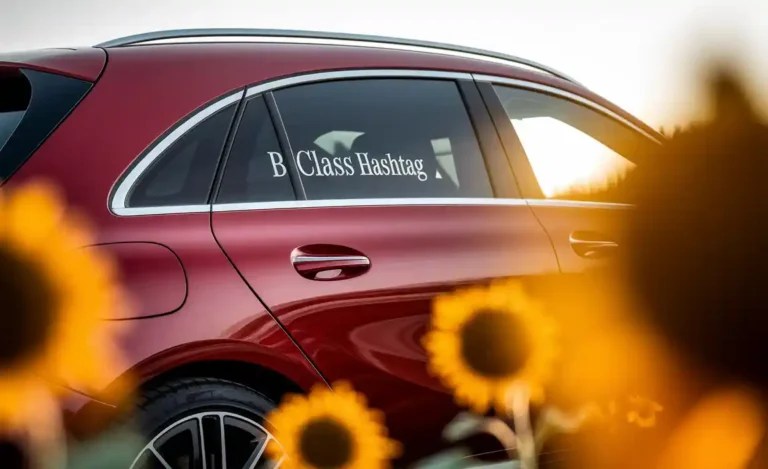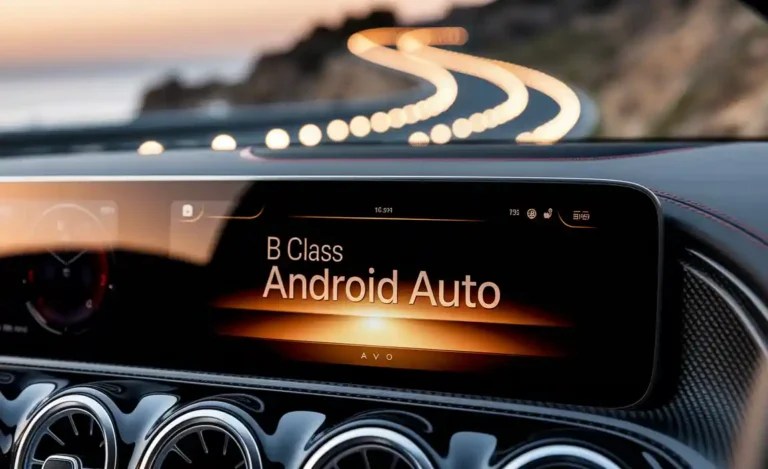B Class Key Coding: Perfect Power Solution
B Class Key Coding is the process of programming a new or existing Mercedes-Benz B-Class key fob to your vehicle, ensuring it can unlock doors, start the engine, and operate remote functions. When done correctly, it’s a seamless power solution that restores full access and control to your Benz.
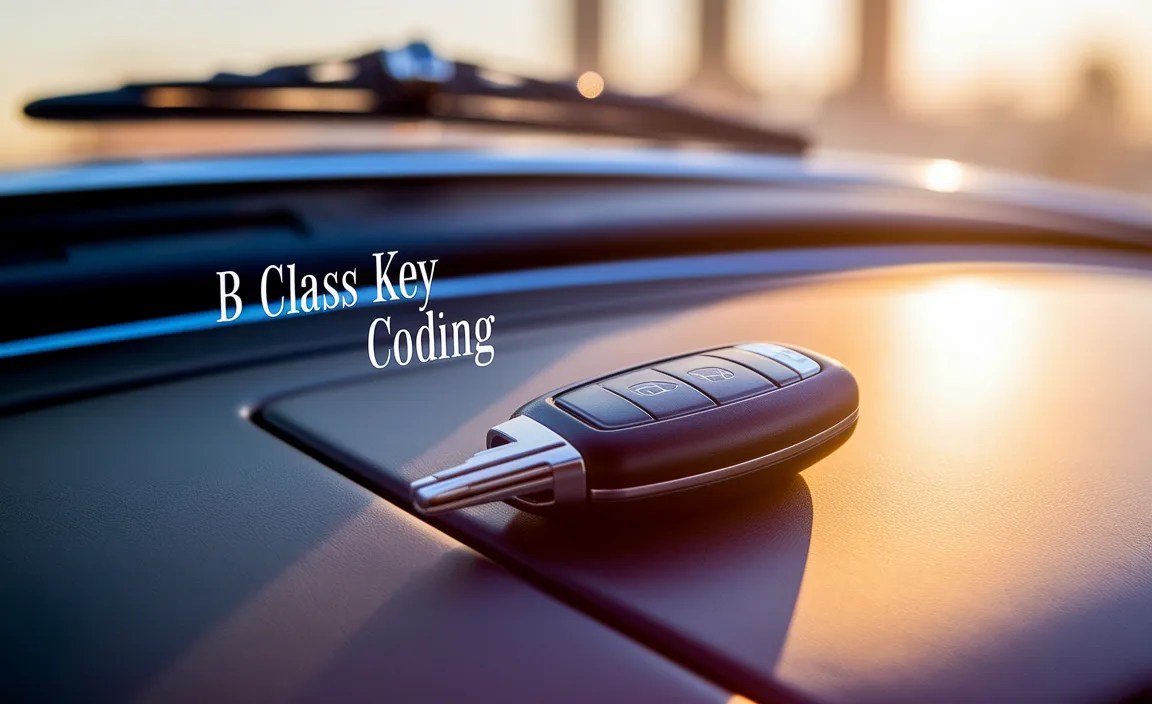
Losing your Mercedes-Benz B-Class key or needing a spare can be a real headache. You might wonder if you can just grab a new key and be on your way. The truth is, modern car keys are sophisticated pieces of technology, especially in a luxury vehicle like a B-Class. They’re not just metal and plastic; they contain complex electronics that communicate directly with your car’s security system. This communication is often referred to as key coding. Without the right programming, a new key is essentially useless. It’s a common frustration for many B-Class owners, but the fix is often more straightforward than you might think. We’re here to guide you through understanding what B Class Key Coding entails, why it’s necessary, and what your options are. Let’s get your B-Class powered up and ready to go!
Understanding B Class Key Coding
At its heart, B Class Key Coding is the term used to describe the process of synchronizing your Mercedes-Benz B-Class key fob with your vehicle’s Electronic Control Unit (ECU). Think of it like a secret handshake that only your key and your car know. This handshake allows the car to recognize the key as legitimate, thus granting access and enabling it to start the engine. Without this unique coding, the car’s immobilizer system will prevent it from running, even if the key physically fits the ignition.
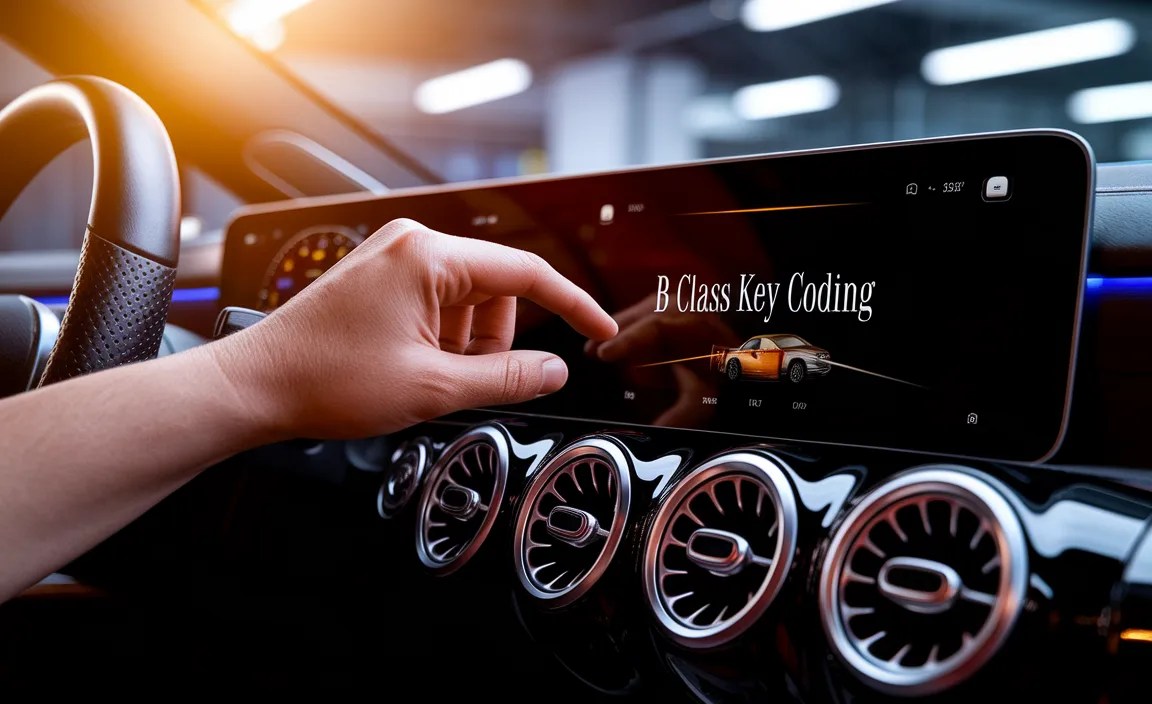
Why is Key Coding Necessary?
The primary reason for key coding is security. Mercedes-Benz vehicles are equipped with advanced anti-theft systems. When a key is manufactured, it’s assigned a unique, encrypted code. This code is registered by the vehicle’s immobilizer when:
A new key is introduced: If you purchase a replacement key or a spare, it needs to be ‘told’ to your car so the car’s system recognizes it.
The vehicle’s ECU is replaced: In rare instances, if the car’s main computer is changed, it may need to relearn the existing keys.
A key is malfunctioning: Sometimes, a key may lose its programming due to battery issues, accidental damage, or electronic glitches. Coding can re-establish the connection.
The Technology Behind Your B-Class Key
Your B-Class key fob isn’t just a remote for your locks. It’s a sophisticated piece of engineering containing:
Transponder Chip: This is the core of the key’s security. It contains a unique, unchangeable code that the car’s immobilizer reads.
Infrared (IR) Transmitter: Used for communication with the car, especially for unlocking doors and arming/disarming the alarm when the key is near the car.
Remote Control Buttons: These send signals for various functions like locking, unlocking, trunk release, and panic alarm.
Battery: Powers the electronic components.
The coding process involves programming the car’s ECU to recognize the specific transponder code of your key. This ensures that only authorized keys can start and operate the vehicle.
Types of B Class Key Coding Scenarios
When you find yourself needing B Class Key Coding, it often falls into a few common categories. Understanding which scenario applies to you will help you determine the best course of action.

Scenario 1: Lost All Keys
This is perhaps the most common and frustrating scenario. If you’ve lost every key for your B-Class, you’ll need a completely new key and then have it coded to your vehicle. This process typically requires proof of ownership and a VIN number.
Scenario 2: Need a Spare Key
Having a spare key is always a wise precaution for any car owner, especially for a luxury vehicle like a Mercedes-Benz. Coding a spare key ensures you have a backup if your primary key is lost, damaged, or malfunctions. This usually involves having the new key programmed to work alongside your existing key(s).
Scenario 3: Broken or Malfunctioning Key
Keys can suffer from wear and tear. Buttons might stop working, the internal components can fail, or the key might no longer be recognized by the car. In such cases, you might be able to get a new key cut and programmed, or in some cases, the key might be repairable and then reprogrammed.
Scenario 4: Replacement of Vehicle’s ECU/EIS (Electronic Ignition Switch)
If your B-Class has undergone major electronic component replacement, such as the ECU or the EIS module, your old keys will no longer work. The new components will need to be coded to your existing keys, or new keys will need to be programmed to the new components.
DIY vs. Professional B Class Key Coding
When it comes to programming your Mercedes-Benz B-Class key, there are generally two paths: attempting a DIY solution or engaging a professional service. Each has its own benefits and drawbacks.

DIY Key Coding: Is It Possible?
For most modern Mercedes-Benz models, including the B-Class, true DIY key coding from scratch (i.e., programming a brand-new key to a car where all keys are lost, or programming a blank key from scratch) is generally not possible for the average car owner. The process requires specialized diagnostic equipment and software that can communicate with the vehicle’s secure immobilizer system.
This is because Mercedes-Benz uses advanced encryption and security protocols to prevent theft. Accessing and modifying these systems requires specific programming tools and manufacturer-level diagnostic interfaces.
However, there are some limited scenarios where a user might be able to re-sync a key that has briefly lost its communication with the car, often related to remote functions:
Re-syncing Remote Functions: Sometimes the battery in the key fob dies, or the key is stored too far from the vehicle for an extended period, causing the remote functions (lock/unlock, trunk) to become temporarily out of sync. This usually involves a simple procedure like manually turning the key in the driver’s door lock cylinder multiple times or inserting the key and turning it to the ignition positions. These procedures are often model-specific and typically found in the owner’s manual’s troubleshooting section. This is not true key coding for the immobilizer.
For any situation requiring the transponder chip to be programmed or a new key to be recognized by the immobilizer, specialized tools are essential.
Professional Key Coding Services
When DIY isn’t an option for the core programming, professional services become the go-to solution. These include:
Mercedes-Benz Dealerships: The most authorized and often most expensive option. They have all the necessary OEM (Original Equipment Manufacturer) tools and direct access to Mercedes-Benz databases for key programming. They ensure genuine parts and factory-spec service.
Automotive Locksmiths Specializing in Mercedes-Benz: Many locksmiths have invested in high-end diagnostic equipment that can perform Mercedes key programming. These services can often be more convenient and cost-effective than a dealership. They are experienced in handling various key-related issues.
Specialty Mercedes-Benz Repair Shops: Independent shops that focus specifically on Mercedes-Benz vehicles often possess the required programming tools and expertise. They can be a good middle-ground in terms of cost and specialized knowledge.
Table 1: Comparing Key Coding Service Providers
| Provider | Pros | Cons | Best For |
| :————————- | :———————————————————- | :—————————————————– | :————————————————————————– |
| Mercedes-Benz Dealership | Genuine parts, factory-trained technicians, full warranty | Highest cost, potentially longer appointment times | Owners who want absolute assurance, warranty work, or peace of mind. |
| Specialist Locksmiths | Often more affordable than dealerships, faster service, mobile options | Expertise can vary, may not always use OEM parts | Owners needing a new spare key, lost keys, or urgent replacements at competitive prices. |
| Independent MB Shops | Specialized knowledge for Mercedes, often good value | May require bringing the car in, not all have coding tools | Routine service alongside key needs, owners who frequent these shops. |
The Key Coding Process Explained
While the exact steps can vary slightly depending on the specific B-Class model year and the diagnostic tool used, the general process for professional B Class Key Coding involves these phases:
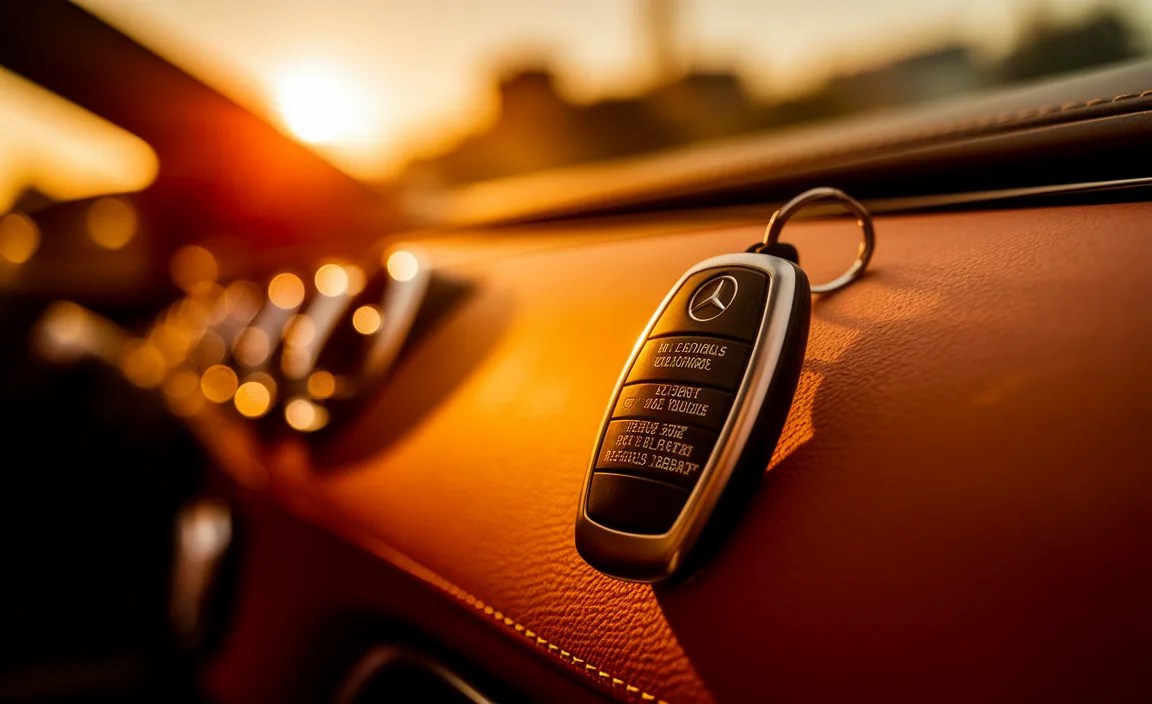
Phase 1: Verification and Access
1. Proof of Ownership: The service provider will require proof that you own the vehicle. This typically includes your driver’s license and the vehicle’s registration or title. For lost key scenarios, they might need the VIN and a coded key blank.
2. Vehicle Identification: The Vehicle Identification Number (VIN) is crucial. This number is linked to your car’s electronic configuration.
3. Accessing the Vehicle: The technician will need physical access to your B-Class, usually requiring the car to be brought to their location.
Phase 2: Diagnostic Tool Connection
1. OBD-II Port Connection: The technician connects a specialized Mercedes-Benz diagnostic tool (like a XENTRY/DAS system or a compatible aftermarket tool) to your car’s On-Board Diagnostics (OBD-II) port. This port is typically located under the dashboard on the driver’s side.
2. System Identification: The diagnostic tool communicates with the car’s ECU and other modules to identify its complete system configuration.
Phase 3: Key Programming
This is where the actual coding happens. The process generally involves:
1. Entering New Key Data: If you have a new key blank, the unique transponder code from this blank is read and entered into the diagnostic software. If you have an existing key that needs to be deactivated or reprogrammed, the system accesses its code.
2. Immobilizer Synchronization: The diagnostic software sends a secure signal to the car’s Elm (Electronic immobilizer unit) or EIS (Electronic Ignition Switch) module. This signal instructs the module to accept and register the transponder code of the new key.
3. Key Learning/Registration: The diagnostic tool initiates a “key learning” or “key registration” procedure. The car’s system will prompt the technician to insert the new key and perform specific actions (e.g., turn to accessory position, then ignition ON).
4. Confirmation: The system confirms whether the key has been successfully programmed. A successful programming means the car will now recognize this key for starting and unlocking.
5. Programming Remote Functions: After the transponder is coded, the remote functions (lock, unlock, trunk, etc.) are usually programmed simultaneously. This involves associating the key’s remote signals with the car’s body control module.
Phase 4: Testing and Handover
1. Functionality Test: The technician will test the newly coded key to ensure it unlocks/locks the doors, opens the trunk, and crucially, starts the engine.
2. Deactivating Old Keys (If Applicable): If all keys were lost, this step isn’t relevant. However, if programming a new key while retaining others, or if replacing a stolen key, old keys might be deactivated from the car’s system for security.
3. Key Handover: The programmed key is returned to you, along with any serviced old keys.
The entire process, from start to finish (assuming you have the key blank), can take anywhere from 30 minutes to a couple of hours, depending on the complexity and the technician’s efficiency.
What You’ll Need for B Class Key Coding
While you, as the owner, typically don’t perform the coding yourself, understanding what’s involved helps you prepare. Here’s what a professional will need and what you should have ready:
Essential Items and Information
Your Mercedes-Benz B-Class: The car is needed for the diagnostic tool to communicate directly with its onboard systems.
Proof of Ownership: As mentioned, this is non-negotiable. Driver’s license and vehicle registration/title are standard.
Vehicle Identification Number (VIN): You can usually find this on the dashboard near the windshield, on the driver’s side door jamb sticker, or on your insurance documents.
The Key(s):
New Key Blank: If you are programming a new key, you will need a compatible B-Class key blank. These can be purchased from dealerships, online, or sometimes from the locksmith who will perform the service. Ensure it’s the correct model and frequency for your B-Class year.
Existing Keys: Bring any existing keys you want to retain. This allows the technician to program them all at once, ensuring they all work correctly with the car’s system. This is particularly important if you’ve lost only one key.
Access Code/PIN (Rarely needed by owner): In some edge cases, or for older models, there might be a PIN code associated with the immobilizer system, though this is usually held by the dealership or known by specialized locksmiths.
Specialized Tools (Used by Professionals)
Mercedes-Benz Diagnostic Software: This is typically the official XENTRY/DAS system or a highly capable aftermarket alternative that emulates its functions.
Diagnostic Interface Adapter: A hardware device that connects the diagnostic computer to the vehicle’s OBD-II port and other specific Mercedes-Benz connectors.
Key Programmer/Encoder: Software and hardware designed to read and write data to transponder chips and remote key fobs.
Key Locksmith Tools: For cutting/modifying physical key blades if necessary.
Cost of B Class Key Coding
The cost of B Class Key Coding can vary significantly based on several factors:
Your Location: Prices differ between urban and rural areas, and across different countries.
The Service Provider: Dealerships are usually the most expensive, followed by independent specialists, and then locksmiths.
The Specific B-Class Model Year: Newer models with more advanced security features may incur higher costs.
The Situation: Simply programming a spare key when you have the original is less expensive than replacing all lost keys.
The Cost of the Key Itself: A new Mercedes-Benz key fob can range from $150 to $500+, depending on the model and features.
General Price Ranges (Estimates for the US market):
Programming a Spare Key (with key blank): $200 – $500 (includes key and programming)
Lost All Keys (requires new key(s) and programming): $400 – $1000+ (depends on number of keys and key cost)
Dealership Service Call/Basic Programming Fee: $150 – $300 for the service itself, plus the cost of the key.
Locksmith Service Call/Programming Fee: $100 – $250 for the service, plus the cost of the key.
It’s always best to get a quote upfront from any service provider you consider.
Tips for Avoiding Key Issues
Preventing key problems can save you time, money, and stress. Here are some tips for maintaining your B-Class key fobs:
Protect from Water Damage: Keep your key fob away from prolonged exposure to water or excessive moisture. Dropping it in a puddle or leaving it in a wet pocket can damage the electronics.
Handle with Care: Avoid dropping your key fob on hard surfaces. The internal components can be delicate.
Replace Batteries Promptly: When you notice weak remote signals or battery warnings, replace the key fob battery. A dying battery can sometimes lead to communication issues with the car. Use high-quality coin cell batteries (e.g., CR2032).
Avoid Extreme Temperatures: Don’t leave your key fob in a hot car on a summer day or exposed to freezing temperatures for extended periods.
Keep a Spare Key: The best defense against losing all keys is having a spare. Get one coded and programmed while you still have your working key.
Secure Your Keys: Keep your keys in a safe place at home and be mindful of where you leave them when you’re out and about to prevent loss or theft.
Proper Storage: If storing a spare key for a long time, consider a signal-blocking pouch to prevent accidental activation or interference.
Frequently Asked Questions (FAQ) about B Class Key Coding
Q1: Can I program a new Mercedes-Benz B-Class key myself?
For the immobilizer system and starting the car, no. True key coding for a Mercedes-Benz B-Class requires specialized diagnostic equipment and software that is typically only available to dealerships and professional automotive locksmiths. Simple remote function resynchronization may be possible following manual procedures in your owner’s manual, but this does not add a new key to the car’s security system.
Q2: How long does B Class Key Coding typically take?
The entire process, from arrival to completion, usually takes between 1 to 2 hours. This includes diagnostics, programming, and testing. Simpler tasks like programming a spare key might be quicker, while replacing all lost keys could take slightly longer.
Q3: What happens if I lose my only Mercedes-Benz B-Class key?
If you lose your only key, you will need to have a new key cut and programmed to your vehicle. This will likely require proof of ownership (registration, ID) and your car’s VIN. You will need to contact a Mercedes-Benz dealership or a qualified automotive locksmith.
Q4: Do I need to bring my car to the dealership for key coding?
Not necessarily. While dealerships are a reliable option, many specialized automotive locksmiths and independent Mercedes-Benz repair shops have the necessary equipment to perform B Class Key Coding. They can often be more convenient and cost-effective.
Q5: Can an old, non-working key be fixed and reprogrammed?
Sometimes, a key might just need a new battery or



